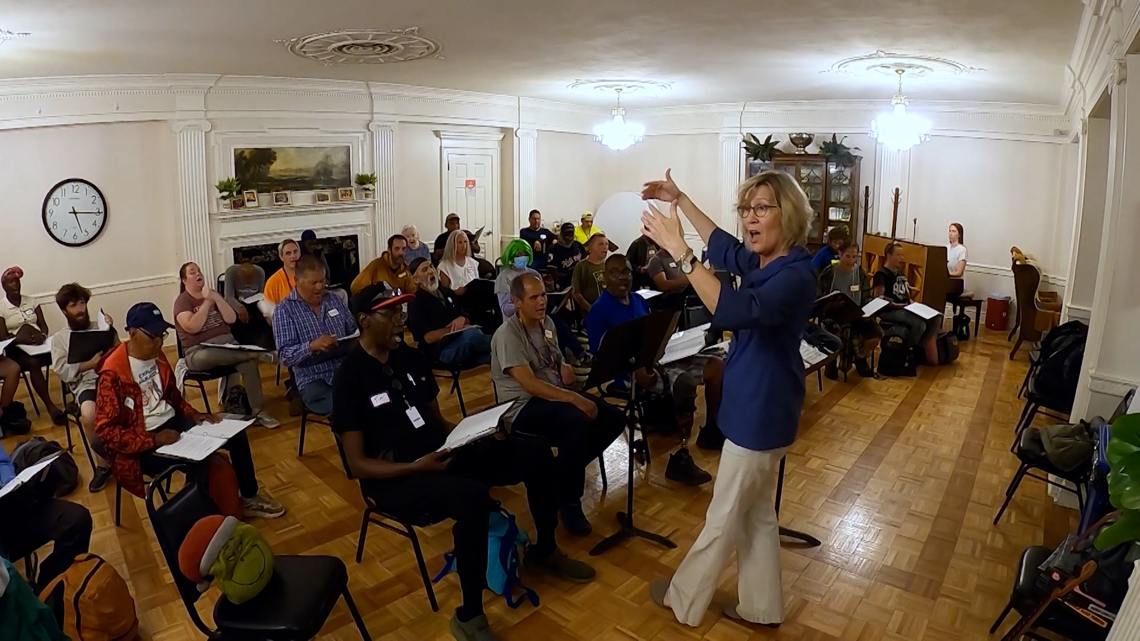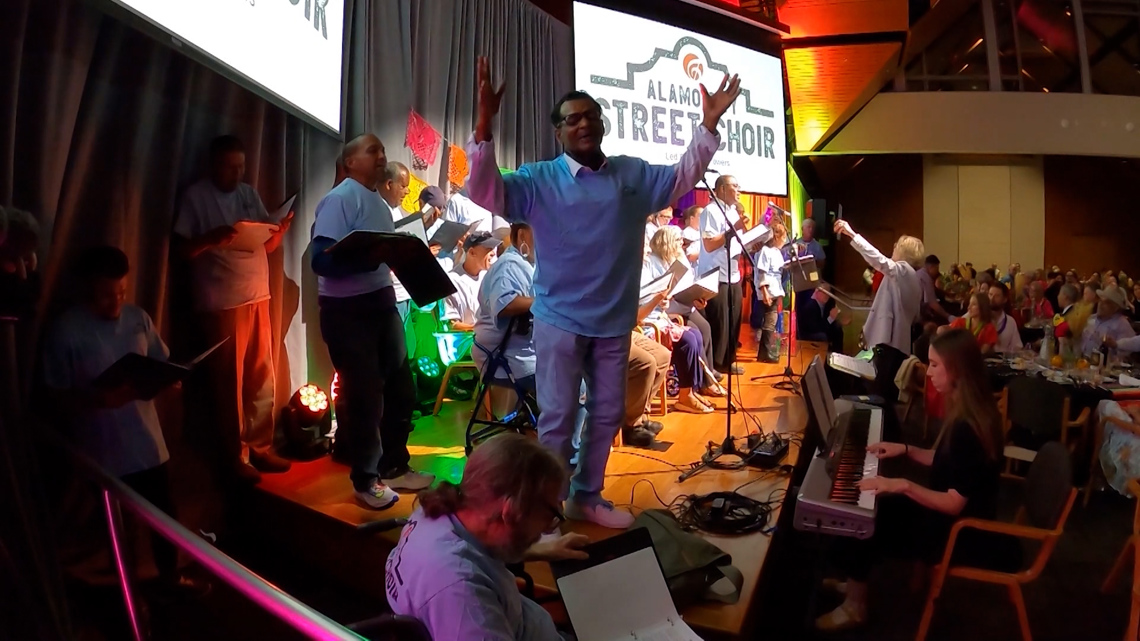The Alamo City Street Choir, composed mainly of unhoused individuals, finds solace and community through music every Wednesday at Travis Park Church.
SAN ANTONIO — Every Wednesday evening, as the sun sets behind downtown San Antonio, a unique sound rises from Travis Park United Methodist Church. It’s not just music — it’s transformation.
The Alamo City Street Choir, made up primarily of people experiencing homelessness, gathers weekly for more than a rehearsal. They gather for refuge, community, and a chance to be seen. The choir, which began in 2019 with just two members, now welcomes up to 60 people each week — and at its peak last summer, drew 72 voices.
The group’s director is Tracy Bjella Powers, who also leads choirs at St. Mary’s University. She volunteers her time each week — preparing carefully selected songs that meet both vocal range and emotional impact. “We try to choose music that’s uplifting, that moves people — but also fits their voices,” she said. “It’s not easy.”
Participants receive a $5 H-E-B gift card each week, but most say they keep coming back for something far greater.
“It lights up your spirit,” said Cesar “Sieze” Valero, who’s been with the choir for two years. “To me, it’s a relaxation. Not only that, it brings back memories of the good times.”


Many choir members have experienced deep trauma: addiction, violence, childhood abuse. But on Wednesday nights, that pain is transformed into harmony. According to 2024 city data, nearly 3,400 San Antonians are currently unhoused—a nearly 7% increase from the year before, ranking the city second in Texas behind Dallas.
James Brown, who’s been involved with homelessness outreach since 2012, now helps recruit new singers. “I started just recruiting people. Two, three people at a time,” he said. “Now we can’t get hardly enough seats.”
The choir’s roots trace back to a vision by Carol Gamble, then executive director of Corazón San Antonio. She dreamed of a choir for the unhoused. That dream found momentum when Gamble enlisted Brown, and the group moved to Travis Park Church.
Each week, sweat beads on brows as songs rise in the un-airconditioned sanctuary. But smiles — and growth — follow.
“It’s taught me self-respect. It motivates me and encourages me,” said Brown. “Drinking, substance abuse, whatever problem you may have, when they come here for an hour, two hours, they stop.”
Members say it’s more than music. It’s belonging.
“I feel that I did something positive, something that I enjoy that made me feel like somebody,” said Margo Lynn Thomas, who joined three years ago after attending church services at Travis Park.
Thomas describes the choir as both calming and energizing. “You grow into it. I’m not wimpy-shy like I started. Now I’m just bold and excited.”
Newer voices like Isabel Moncada’s are also finding purpose through song. “They told us about the choir and I started coming and I loved it,” she said. “I’m doing it for Him… and I’m ready to go with Him. That’s why I want to go the right way.”
The choir regularly performs at churches and venues like the Whitley Theological Center off Oblate. After each rehearsal, the singers join hands for a prayer circle — a ritual that bookends their hour of harmony.


Powers says she’s seen it all — doubt, trauma, transformation. “So many of them were told as kids to just mouth the words,” she said. “We’re breaking through that. Everyone deserves access to an aesthetic experience.”
And when they sing together?
“Serotonin increases. Dopamine goes up. Cortisol levels drop,” she said. “We all feel better.”
As one woman wiped away tears at a recent performance, the reason became clear. These voices — often overlooked — are finally being heard.
“We’re giving something meaningful back to the world,” said Powers. “Something that can move others.”
Larry Fay, who’s been part of Travis Park Church for more than 15 years, sees it too. “We’re all learning, learning and tolerating each other while we make a joyful noise,” he said. “Don’t call them ‘homeless’. Call them our guests.”
“The music helps us maneuver our way through life. It’s another song, another dance, and we get to do it together every week,” said Fay. “It’s spreading a positive message. If we can do that with our voices, it’s gonna heal. It’s gonna heal people and heal ourselves, too.”
